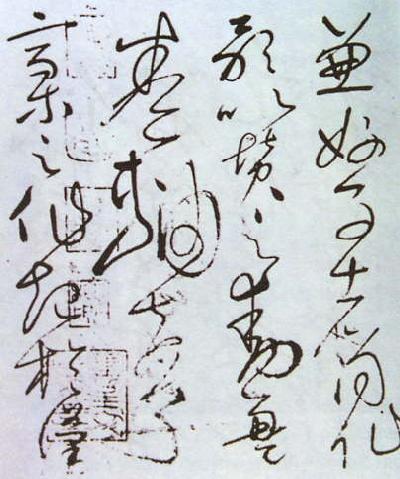| Art Q&A > Calligraphy |
|
|
Cursive Hand
Caoshu (cursive hand) is characterized by sketchy, simplified forms of characters, often distorted or exaggerated to achieve an internal rhythmic appearance within the compositions of characters. In theory, any character can be written in the style of Caoshu, for instance many course characters appeared in inscriptions on bronze wares. However, Caoshu in literature refers to a specific style developed from Qin Li (official script in the Qin Dynasty), formed around the Western Han Dynasty (206BC-8AD) and prevalent in the Eastern Han Dynasty (25-220).
Because Caoshu uses lots of running strokes and only has the outline of the characters, it is illegible to most readers and affects its function of communication. Therefore, though Caoshu came into being comparatively early, it didn't become in written form within a state, while Zhuanshu (seal script) and Lishu (official script) could not be written hastily, hence Caoshu emerged. one of the calligraphies in general use. However, it has been always loved by many people. Famous Caoshu calligraphers include Zhang Zhi, Zhang Xu, Huai Su and so on. |
||||||
All rights reserved. Reproduction of text for non-commercial purposes is permitted provided that both the source and author are acknowledged and a notifying email is sent to us. |
||||||
 |

